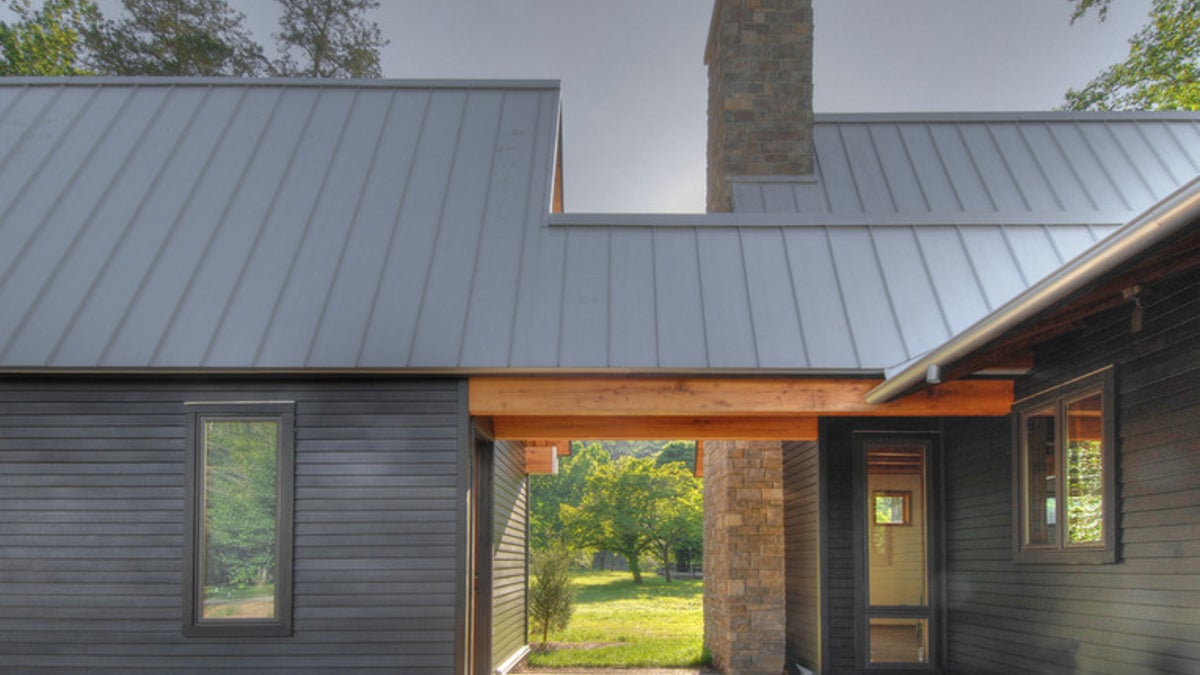
Roof repairs are to homeownership what good nutrition is to overall health — a necessary component of keeping things in working order. They may not be the most glamorous projects, but they are definite musts. Here is a beginner’s guide to keeping your roof intact and your home dry.
While it’s obvious that you need to immediately address an active roof leak, it’s also wise to move quickly on more minor problems such as missing or loose shingles. That way, you can prevent water damage from starting or, if it’s already begun, from spreading further. A minority of homeowners may be willing to climb onto their roofs, but for reasons of safety and expertise, most will want to call a professional roofer.
What’s involved: For a leaking roof, the first step is identifying its location. “Most leaks exist where there’s already a pre-existing roof penetration,” says John Koch, a roofing contractor at John Koch Construction in Sioux Falls, South Dakota. Leaks tend to develop near a chimney, venting pipe, screw or satellite dish, or in a valley “where two different roof pitches meet,” Koch says.
To locate a leak, your roofer will get on the roof and probably also crawl into the attic. The repair method will depend on the cause of the leak. “It may be a torn shingle, flashing installed improperly or a missing ridge cap,” says Bill Collins, vice president of residential sales at Baker Roofing Co. in Raleigh, North Carolina. The source also could be an improperly installed skylight. Roofing cement can close a gap or hole at least temporarily, but if the problem is an improperly installed skylight or flashing, a more involved repair may be required.
Also, depending on how much water damage affected your ceiling, roof deck or wall Sheetrock, you may need to get a general contractor to repair that part of your home.
If the problem with your roof is a loose or missing shingle (or a few of them) without additional damage, your roofer simply can replace the shingles. This involves the professional pulling out the old nails from where the shingles used to be, applying roof cement to the back of the new shingles, sticking the shingles on and nailing them down. Roofers are skilled at where to insert the nail.
“There’s a sweet spot in the architectural shingles where the manufacturers want you to nail. If you nail above that, wind gets in and blows [them] off,” Collins explains.
Things to consider: If your roof has been damaged due to a weather event such as a hail storm, strong winds or even a tornado, your homeowner’s insurance policy may cover the repair cost. “Call a roofer,” says Brett Rostochil, vice president of sales and marketing at Allstate Roofing Experts in Oklahoma City, Oklahoma, and a former insurance adjuster himself. “The good ones will know whether there’s enough damage to warrant an insurance claim.”
Rostochil recommends having a roofer on-site during the appointment with the insurance adjuster. Some adjusters are more knowledgeable than others. “Experience is a big deal,” he says. Rot and mold are excluded from many policies — another reason to fix a roof problem as soon as you notice it.
Well-installed metal roofs should last at least 50 years, so if yours has a leak, it’s a bigger deal than for a shingle roof. “Leaks don’t just happen in metal roofs,” says Paul Welch of Revered Metal Roofing in Marshfield, Massachusetts. “It’s got to be a hole coming through the metal before they start to leak.” The most common places to spring a leak are a pipe boot (where a venting pipe comes out through the roof), a dormer or a chimney.
As long as the roof installation was professionally done, holes shouldn’t occur except after a major event, such as a tree crashing into it. “If you need to repair a metal roof within the first five years, either something happened to damage it, or you got a bad installation,” Welch says. “You should be looking at replacing it.”
Similarly, when you need to fix a shingle roof, you’ll also want to consider the scope of the problem. “If a shingle or two blows off, that’s not an issue,” Koch says. “But if it continuously blows off, it’s time to replace.”
RELATED: The Most Affordable Roofing Material With the Easiest Installation
If you need to replace shingles, you’ll want to have matching ones on hand. Ideally, you get an extra bundle when you purchase a new home. Alternatively, you might want to make sure there are extra shingles left over next time you get your house reroofed.
Whom to hire: A roofing contractor or a handyperson
Cost range: Fixing a leak or replacing a few shingles may incur the minimum trip charge, which can range from $250 to $750.
Typical project length: Anywhere from 10 minutes to a few hours to fix a leak or replace a missing shingle
Permit: No
Best time to do this project: When the weather is mild
How to get started: Identify the source of the leak as best you can from inside the home. Put a bucket underneath the spot to catch drips until it can be repaired. Call a reputable roof repair company.